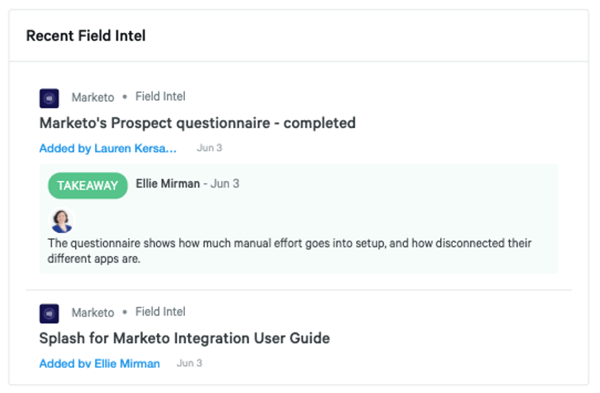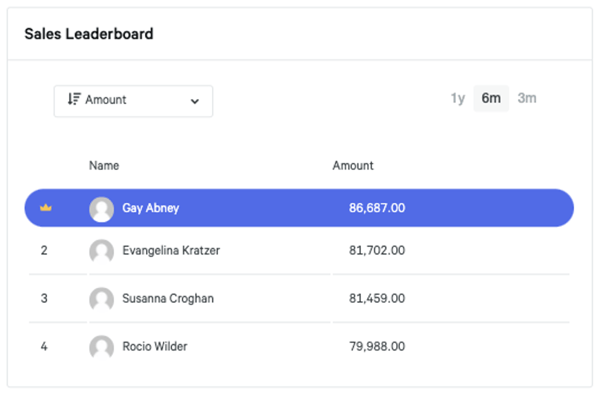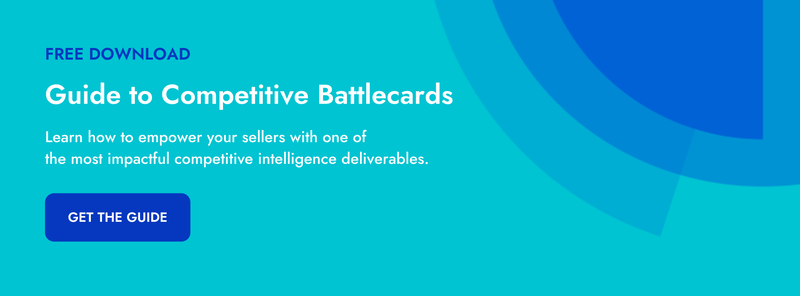You’ve crafted amazing battlecards. They have the latest intelligence, crisp messaging, and deep information on each competitor. And yet the sales team doesn’t adopt them. They have their own processes, their own strategies, the habits you can’t seem to break. They simply trust their own first-hand experiences more than the guidance handed over in a battlecard.
The reality is that the sales team’s first-hand experience is incredibly valuable when it comes to testing and validating competitive messaging and getting hard-to-find intel like pricing and product roadmaps. Partnering with your sales team on battlecard content creation can be an incredible way to level up your battlecards and result in greater adoption from those same teammates.
But how do you go about engaging them, especially if your company has a history of misalignment between Sales and Marketing or Competitive Intelligence (CI)? Here are six strategies to turn that relationship around, partner with sales to create great battlecards, and ultimately get greater adoption and higher competitive win rates.
1. Interview Top Sales Reps for the Initial Content
If you’re just getting started with a new battlecard, or completely revamping existing battlecards, this is a good time to sit down with your top sales reps. Reach out to them - they should be flattered to be recognized as a top rep - and interview them. What strategies (messages, content, etc.) have been effective for them? What are the stickiest points that come up in competitive deals? What have they learned along the way that’s helped them win more often?
This should become the foundation for your battlecard content. Incorporating any soundbites that are actually used in the field successfully will resonate with the rest of the team and provide further legitimacy because it’s come straight from the top reps. You can even partner with those sales reps as part of the training and rollout of those battlecards to others. Have them speak, salesperson to salesperson, about their process, and let everyone see how that’s echoed in the battlecards.
2. Encourage - and Showcase - Ongoing Sales Rep Contributions
Sales rep contributions to battlecards should be ongoing. Sales reps often can hear rumors of a competitor’s product roadmap from a prospect, or even get their hands on a coveted pricing proposal with details not easily found. The danger is when this information is circulated among the sales team without reaching the competitive intelligence team. That information needs to reach that CI person who is updating competitive materials like battlecards. To encourage this to happen, make it as easy as possible for sales to share what they’ve found - whether that be through email, chat, or - even better - directly on the battlecard.
Once sales has shared something they’ve discovered in the field, make sure others know about it. Be host to that knowledge share. Consider including this field intel directly on the battlecard, automatically updating those battlecards with the latest intel discovered by a sales rep, and give them credit. Give them a shout-out directly on the battlecard and in other proactive updates to the team. Be sure to do the extra step, of course, of providing the takeaway (e.g. “Competitor X’s pricing in this proposal shows that they charge extra for Feature A, B, and C, key functionality included in our platform.”).
3. Highlight Top Sales Reps that Win Competitive Deals
Sales reps want to learn from each other, and specifically from their peers who are most successful. Consider highlighting the top sales reps on your battlecard - specifically ranking those who win the most against the competitor whose battlecard they’re viewing. This will give due credit to top performers and allow reps viewing the battlecard to reach out to those reps to ask for advice or other questions they have about beating that competitor.

4. Integrate Actual Soundbites from Successful Reps
Your battlecards need to be easily digestible and actionable by the sales reps using them. Providing soundbites that reps can say on the phone or include in an email is a great way to make it easy for sales to adopt your guidance. When providing soundbites, try using actual soundbites from successful reps. For initial content gathering, these soundbites can come from the interviews we covered earlier. On an ongoing basis, figure out where sales reps are sharing this information with each other - email? Slack? meetings? - and join that conversation. If you have any sales logging tools like Gong or Chorus for call recording or Outreach or SalesLoft for email sending, check out what the team is using and finding effective in the field.
5. Collect Comments and Respond as Necessary
Another great way to engage your sales team on an ongoing basis is by allowing them to post comments and questions on the battlecards themselves. They can provide feedback around messaging that did or did not work. They can post questions like, “how do we compare to this competitor on X?” They can also share rumors they’re hearing in the field that can trigger additional competitor research.
When you start getting these comments, the most important part is to show you’re listening and responding appropriately. Respond to comments to answer questions or thank reps for sharing new info. Update battlecards as necessary and close the loop with the reps that helped in the process. This will encourage them to keep coming back with future questions, comments, and intel.
6. Leverage Other Channels for Battlecard Engagement
Battlecards are a great go-to resource for competitor information and positioning guidance tailored for sales. And while there are strategies for getting sales reps to come back to your battlecards - like integrating them into the systems they use every day, like their CRM - all of their competitive resource consumption doesn’t have to happen on the battlecard itself. The most important thing is for sales to be enabled to win competitive deals, and battlecards are just one piece of that puzzle.
If your sales team uses email heavily, try setting up alerts so they can get the latest competitive updates in their inbox. If your sales team uses internal chat like Slack regularly, use a competitive Slack channel to let them discuss, ask questions, and share info about competitors. Instead of trying to change their daily behaviors, lean into their habits to get greater adoption and engagement on the intelligence you want them to use. After all, the most important thing is that they win the competitive deal, regardless if they get that competitive guidance by email, chat, or a battlecard.
By engaging your sales team from the very beginning steps of battlecard creation all the way through ongoing updates and discussion, you can get greater adoption. And greater adoption leads to more sales reps being armed with the intelligence they need to win more competitive deals.

Related Blog Posts
Popular Posts
-
 How to Create a Competitive Matrix (Step-by-Step Guide With Examples + Free Templates)
How to Create a Competitive Matrix (Step-by-Step Guide With Examples + Free Templates)
-
 The 8 Free Market Research Tools and Resources You Need to Know
The 8 Free Market Research Tools and Resources You Need to Know
-
 Sales Battlecards 101: How to Help Your Sellers Leave the Competition In the Dust
Sales Battlecards 101: How to Help Your Sellers Leave the Competition In the Dust
-
 6 Competitive Advantage Examples From the Real World
6 Competitive Advantage Examples From the Real World
-
 How to Measure Product Launch Success: 12 KPIs You Should Be Tracking
How to Measure Product Launch Success: 12 KPIs You Should Be Tracking




.png?width=500&name=Sales%20Enablement-What%20is%20SE_%20(2).png)
